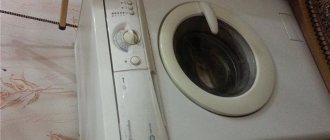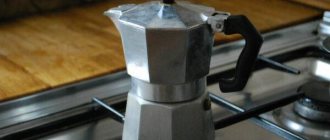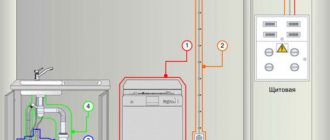Many people, when purchasing a dishwasher (hereinafter also referred to as PMM, dishwasher), do not think about how it works. In fact, the principle of operation of a dishwasher is quite simple - washing dirty dishes is carried out with a heated mixture of water and detergent.
A kitchen dishwasher frees housewives from the unpleasant worries of keeping dishes clean
An ordinary person knows only this principle of operation, but is not familiar with the structure and design features of this type of equipment. And for successful operation and maintenance of the PMM, you need to understand how the dishwasher works.
Stages of work and processes occurring in the dishwasher
The operating algorithm of the machine is given in the instructions supplied with each device. In our article we will look at all the stages and try to explain them in the most accessible language. It all starts with the fact that the PMM needs to be connected in the kitchen to the electrical network, water supply and sewerage. With certain skills, you can do these operations yourself or call a professional.
When the connection is complete, you can start working:
- Fill the dishwasher bins with consumables: special salt, detergent and rinse aid. You can use tablets in which the latter components are combined, but salt should still be added separately - it softens the water.
- Place dirty dishes in baskets. How to do this correctly is described in our article.
- Run the dishwasher and select a program that matches the degree of soiling of the dishes loaded.
- By pressing the “Start” button, the working process begins - water from the water supply begins to flow through the inlet valve into the container located inside the PMM.
- Mixing with salt, the liquid becomes softer. Soft water washes dishes much more effectively . In addition, the formation of large amounts of scale is prevented. At the same time, the process of heating the water to the temperature specified by the washing program takes place (if the device is connected only to cold water). Some dishwasher models (Bosch, Siemens and other well-known brands) have the ability to connect to cold and hot water, which are mixed to the desired temperature.
- If the load of dishes is very dirty with dried food residues, cleaning them should begin with the soaking process. Water is mixed with detergent, and the circulation pump supplies it in small portions to the nozzles of the spray impellers located at the top and bottom of the chamber. Rotating under water pressure, the impellers distribute the detergent composition onto the surface of the dishes until all the dried dirt has liquefied. Then the rinsing mode is activated. The pump pumps liquid to the impeller nozzles in full. The main washing jets are sprayed from the lower spray impeller, washing away most food waste from dishes.
- During rinsing, the liquid is filtered and collected in the PMM container. It is not drained into the sewer, but is used again. To do this, an additional portion of detergent is added to the collected liquid and the rinsing process is repeated to wash away food residues from the dishes.
- Once the plates and cups are washed, the waste liquid is pumped out into the drain by a drain pump. Then the inlet valve opens and the inside of the container is rinsed with clean water, which is then also discharged into the sewer. The clean reservoir is refilled with fresh water for the final step - rinsing the washed dishes.
- Water is mixed with rinse aid and supplied by a circulation pump to the impeller nozzles under high pressure. At the same time, all food residues and detergent are washed off from the surfaces. At the same time, dirt is removed from the chamber in which the whole process takes place. Upon completion, all liquid is drained into the sewer.
- The final stage of work is drying. Depending on the PMM model, dishes can be dried under the influence of forced injection of hot air or naturally (convection drying) using a heat exchanger.
Types of drying implemented in various models of dishwashers
The processes of washing and rinsing dishes can be repeated several times, depending on the selected program . Thus, although there are many steps, the principle of operation of a dishwasher is quite simple. But at the same time, the household appliance has design features that users need to know in order to operate it correctly.
The process of washing dishes in a household dishwasher
Selecting work programs
The best washing effect is provided by the ECO (economical) program, but if the dishes are heavily soiled, you should still choose “intensive washing”.
For washing fragile dishes, a delicate mode is used, which differs from all others in that the water temperature will rise during the first rinse. By the way, this same mode is also suitable if the dishwasher contains dishes of completely different types and materials.
Important! It is impossible to tear off the machine immediately after the last cycle is completed. It is recommended to wait about 25 minutes more to allow the dishes to cool down.
Finally, it should be noted that you need to wash the machine, or rather its filters, after each start; to do this, it will be enough to wipe them with a damp washcloth. We should not forget about the sprinkler nozzles; it is very important to ensure that they are not clogged.
How does a dishwasher work?
How does a dishwasher perform its tasks and wash even heavy dried dirt clean? After all, the dishes are not subject to any mechanical stress. To understand this, you need to consider its structure in detail.
The structure of the unit is not very complicated; it includes:
- control unit – is the main unit of the PMM, controlling the operation of all actuators;
- a sensor system that supplies the control unit with information;
- actuators, each of which performs a specific task.
If you disassemble the dishwasher into its main components and parts, it will look like this:
- Upper basket for dirty dishes.
- A door closer that prevents sudden opening or closing.
- Upper and lower impellers that spray liquid onto the dishes.
- Liquid temperature sensor.
- Filter mesh and coarse water filter.
- An outlet hose that drains dirty water into the sewer.
- Pressure limiting valve.
- A drain pump that pumps waste liquid into the sewer.
- A container that holds clean and filtered water.
- One of the parts of the system that protects the PMM from leaks.
- Control block.
- A circulation pump that pumps liquid into the impeller nozzles.
- Condensing unit.
- Hopper for rinse aid.
- Blocking node.
- Hopper for detergent.
- An inlet valve that regulates the flow of water from the water supply.
- Elastic door seal.
- Hopper for water softening salt.
- Tubular electric water heater - heating element.
- An inlet hose that carries tap water.
- Guides for moving baskets.
The location of components and parts in the dishwasher body is shown in the figure below.
The structure of a dishwasher using the Bosch model as an example
From the video, readers will learn what happens in the dishwasher chamber while washing dishes:
How do PMMs differ?
The above parts are standard components of any dishwasher. Depending on the manufacturer’s brand (Electrolux, Ariston, Bosch, Hansa), the equipment can be supplemented with new functions and elements:
- Heat exchanger. Its operation allows you to quickly dry dishes after a wash cycle. It is a reservoir of water that releases heat and saves energy.
- Additional heater, fan. Serve as the basis for turbo drying. The heating element heats the air, and the fan disperses it throughout the chamber. As a result, after a few minutes you take out dry dishes.
- Turbidity sensor. Determines the purity of water in the tank. The appliances will be rinsed repeatedly until the water runs clear. Therefore, the plates come out perfectly clean.
- Rinse aid and salt sensor. As soon as the funds are running low, the sensors will report this and you will be able to replenish the stock in time.
- Sensor Dry. The new development is found in expensive PMM models. This is a sensor that scans the ambient temperature and adjusts it accordingly in the hopper.
- Container with zeolite. Another drying technology. By absorbing moisture, the mineral generates heat, which allows the devices to dry. Interestingly, the shelf life of the mineral is long, it lasts for the entire lifetime of the dishwasher. At the same time, the equipment does not consume electricity.
- Water hardness sensor. The sensor readings serve as a signal to select the optimal washing program. Can only be found in expensive PMMs.
- Beam on the floor. Convenient function for determining the end of a program. Depending on the type, this may simply be a beam or an indication of the time until the end of the cycle (Bosch, Siemens).
- Separate spray nozzle for baking trays and glass holder. Components can come with the equipment (Indesit, Burning) or be purchased separately, as in the Beko, Ariston equipment.
In addition, equipment may differ in the material of parts and components. For example, baskets can be made of plastic and metal, and their holders can be folding. Rocker arms are most often made of plastic, so you need to install the plates carefully so as not to damage the part. In rare models there are metal nozzles.
Features of some dishwasher models
Depending on what type of drying is implemented in the PMM, it can be equipped with a heat exchanger (convection drying) or an additional air heater and fan (turbo drying). Some new models are equipped with a zeolite block.
The heat exchanger is a container inside the PMM filled with cold water. After washing, moisture evaporates from the surface of the dishes and condenses on the cold surfaces of the heat exchanger and chamber. In this way, the utensils are dried naturally, but this is a long process.
With turbo drying everything is clear - the fan blows heated air over the contents of the chamber. Everything dries quickly, but the fan creates a little extra noise. Drying with the mineral zeolite has recently begun to be used. The principle of operation is simple: when moisture is absorbed, the mineral heats up, heating and drying the air inside the chamber. There is no need to replace or add zeolite - it can regenerate itself.
The latest models of dishwashers have an interesting feature: information about how much time is left until the end of the work is projected onto the floor surface. There are similar options with a red laser “bunny” indicating the end of the work.
By observing the information on the floor, it is easier to control the operation of the dishwasher from afar
As you can see, there is nothing complicated in the operation and design of dishwashers. Once you understand the operating principle and design of the PMM, it will be much easier for you to operate this equipment.
Practical rules for operating the device that you will not find in the instructions
Using the device as written in the instructions is the key to quality work. However, it is not always possible (or desire) to read it. Therefore, we share important tips and nuances of operating the unit:
- The dishwasher is not intended for washing wooden products. Also be careful when washing ceramics, silver and brass. But glass and crystal can be loaded into the device without fear that they will break. A special program is provided for them.
- Place sharp objects in specially made compartments in the basket or in the top box. It is important that they do not interfere with the movement of the rocker arms.
- Lock the unit during operation to avoid the risk of burns.
- Do not open the door immediately after washing has finished. Let the dishes cool down a bit.
If you want to wash dishes with detergent that you use to wash dishes by hand, then remember that it should not foam much. Because it will damage the device. It is not recommended to immerse ordinary or laundry soap into the unit as a detergent. Under no circumstances should you set the drying mode if you put plastic dishes in the sink. As a result, it can either leak or become very soft.
If you see food residues on the bottom of the device after the device has finished operating, then you need to clean the drainage filter. To make it less clogged, you need to clear the dishes of food before loading.
Ion exchanger with salt - principle of operation and purpose
Some dishwasher owners mistakenly believe that sodium regenerating salt and detergent are the same thing. However, these compositions perform different functions, and in addition, they are poured into different containers. The powder is poured into a container located in the hatch of the device, salt is added to the reservoir located at the bottom of the washing chamber.
Of course, you can find special “tablets” that already contain the required amount of salt. This product is placed in the dishwasher lid reservoir. But if the tap water is too hard and contains a large amount of calcium and magnesium, then it is advisable to use a special salt composition for the ion exchanger. Otherwise, the device will fail quite quickly.
Every dishwasher has an ion exchanger. It contains a resin consisting of sodium chloride. Water intended for washing dishes from the water supply first enters the ion exchanger, where sodium ions replace calcium and magnesium contained in the liquid. This chemical reaction allows you to avoid the formation of scale on machine parts, as well as the appearance of stains on washed dishes.
As the device operates, the sodium salt is gradually washed out of the unit. In this case, it is necessary to use special dishwashing compounds in which the NaCl content exceeds 99% to add a new portion. The use of ordinary table salt is prohibited.
The consumption of sodium salt depends on the operating mode of the machine. Most often it can be configured manually. However, in the future you will have to constantly monitor the composition of the water and, if necessary, make additional adjustments.
Advice! To simplify your task and eliminate the need for manual adjustment, it is recommended to immediately purchase devices complete with a stiffness sensor. In this technique, all settings are done automatically, and salt consumption will be as economical as possible.
You might be wondering: how to choose a dishwasher.
This is interesting: Steam mop: what it is, how it works, pros and cons
Design and types of drying system
The drying system is available in several versions:
- Drying naturally. Occurs due to moisture condensation. Takes several tens of minutes.
- By increasing the temperature of the heating component, which is located at the bottom of the machine. This leads to evaporation of water. No energy is wasted.
- Using a fan. In this case, the dishwasher must be equipped with a fan. Hot air is blown onto the washed dishes. Noisy when in use. Wastes electricity. If you choose a dishwasher with a built-in fan, you should pay attention to sound insulation.
- Thanks to the pressure difference located in the compartment for dishes and water.
- Using zeolite. It is placed at the bottom of the dishwasher. When water hits it, it generates heat. There is no need to replace it. He is capable of regeneration. Consumes less energy than a fan.
Additional functional elements
The above dishwasher parts are standard for this class of household appliances. But every manufacturer strives to improve its technology, adding new functions to it by installing elements.
- Sensor for determining water purity. This sensor helps the dishwasher automatically select a dishwashing program (amount of detergent and water, temperature).
- Sensors that detect the presence of rinse aid and salt are installed in the vast majority of models.
- Sensor Dry is a drying sensor that measures the ambient temperature, relative to which the PMM will determine the method of drying dishes. This sensor is installed in expensive dishwasher models such as Miele G4263Vi.
- A “beam on the floor”, red or green, depending on the stage of the program, is available in all modern washing machines. In a Bosch dishwasher, as well as a Siemens dishwasher, this indication can show the remaining time and the progress of the program.
- A special rocker for washing baking sheets and a holder for glasses is present in some models, but more often it is purchased separately.
In addition to the above, PMM can also be divided according to dimensions (large, small, narrow), the material of the rocker arms and their quantity, and the different design of the baskets. Most dishwashers can be built into kitchen furniture. In Bosch machines, the baskets can be adjusted in height; in other models they may have folding elements. Also, the difference may be in the software itself.
You can learn about the features of each model from the instructions that come with the unit. It shows the installation diagram and electrical connection diagram of the device.
You may be interested in: rating of the best dishwashers of 2020.











